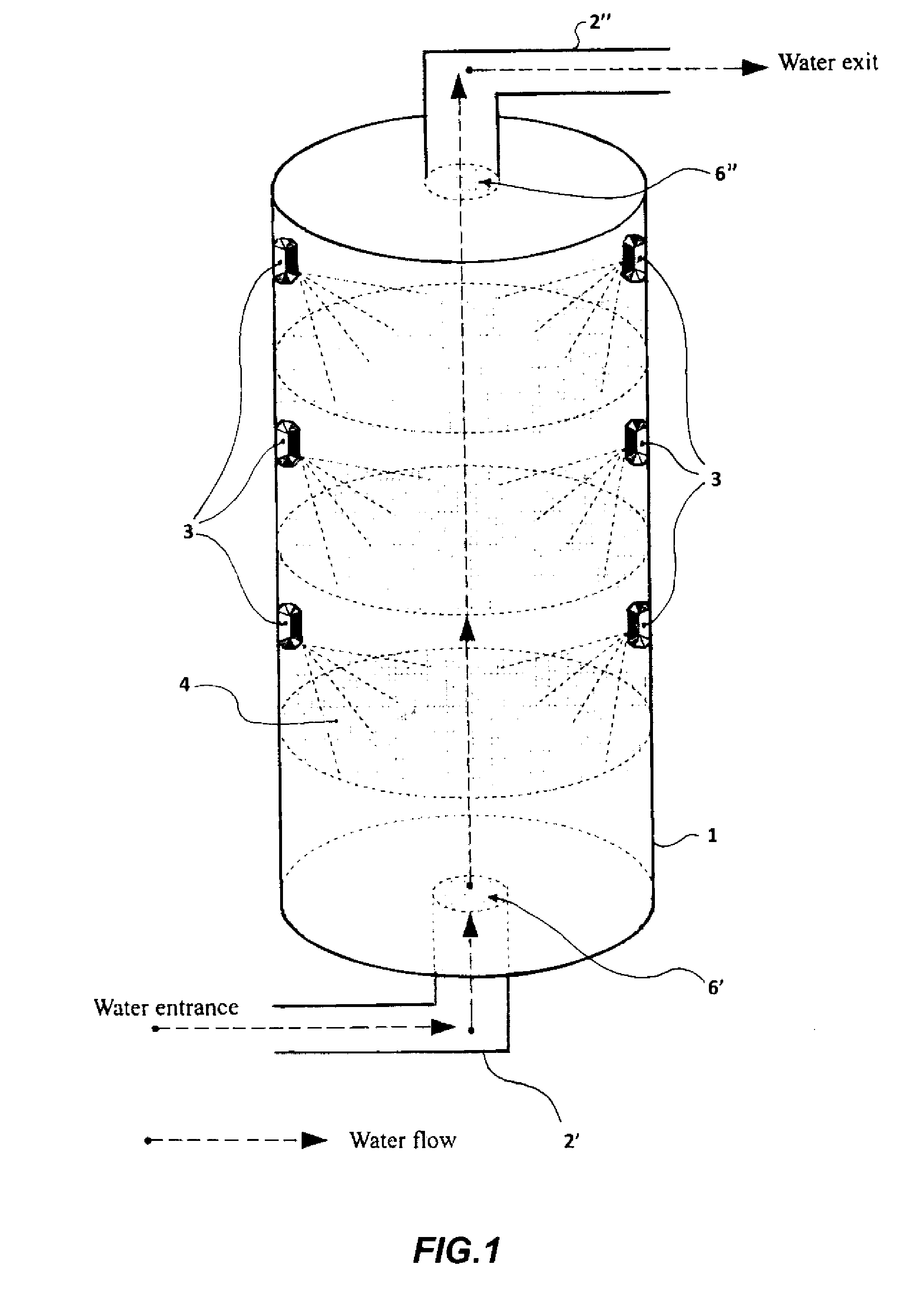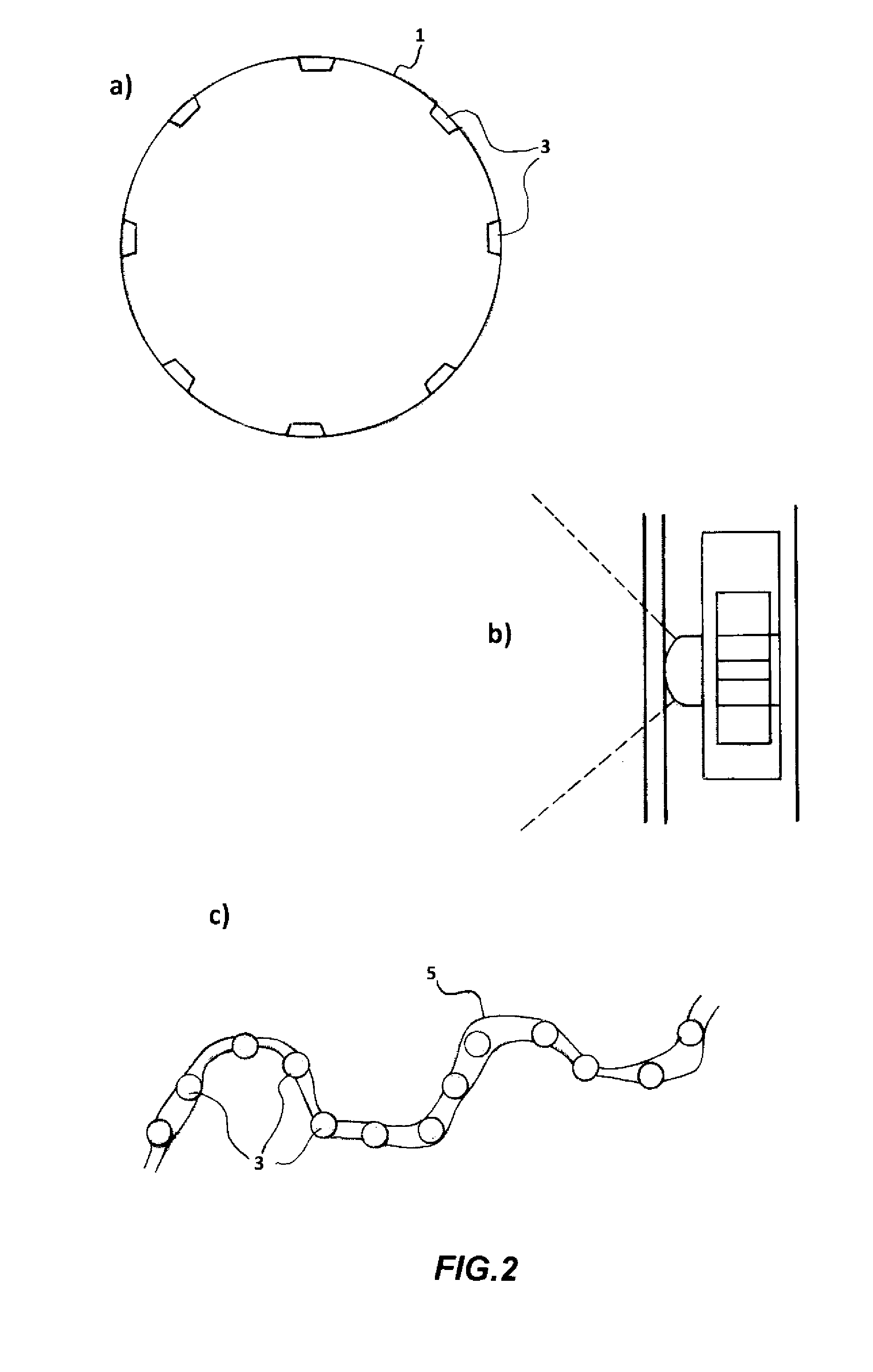Porphyrinoid components, method and apparatus for water photodisinfection
a technology of porphyrinoid components and water, applied in the direction of azaporphine/azaporphine, specific water treatment objectives, water treatment compounds, etc., can solve the problems of increasing the difficulty of providing high-quality pure water from surface and ground water stocks, increasing the difficulty of providing water supplies, and many water sources are heavily polluted by hazardous chemicals. , to achieve the effect of facilitating the solvation of photosensitizers, minimizing the risk of “
- Summary
- Abstract
- Description
- Claims
- Application Information
AI Technical Summary
Benefits of technology
Problems solved by technology
Method used
Image
Examples
example 1
Studies with CM-Sephadex-Porphyrin Systems with and without the Spacer Spectroscopic Studies
[0164]Initial studies about the antimicrobial activity of visible light-excited resin-spacer-porphyrin systems were carried out by using CM-Sephadex-taurine-C1 porphyrin adducts, where C1 indicates the meso-(N,N,N,N-tetra-methyl-pyridyl)porphine.
[0165]The C1 porphyrin was obtained as a commercial product from Sigma Chemical Co., in the form of a crystalline powder with a 99% purity. Other meso-substituted porphyrins were prepared by chemical synthesis according to the procedure described by Bommer and Jori in the U.S. Pat. No. 6,573,258 (2003). The direct attachment of the cationic porphyrins to the CM-Sephadex resin was obtained by formation of an ionic bond between the negatively charged carboxylate moieties in the Sephadex and the four positive charges in the porphyrin molecule. Typically, the CM-Sephadex (1 g) was incubated at room temperature with a ten-fold molar excess of C1 in water b...
example 2
Photosensitised Inactivation of Bacteria
[0171]The efficiency of photoactivated CM Sephadex-C1 porphyrin (sample A) and CM Sephadex-taurine-C1 porphyrin (sample B) as cytocidal agents against microbial pathogens was comparatively investigated by using one typical representative of Gram-positive bacteria, namely meticillin-resistant Staphylococcus aureus (MRSA), and one typical representative of Gram-negative bacteria, namely Escherichia coli, as substrates. Toward this end, aqueous suspensions of both bacterial strains (108 cells / ml) were exposed to full spectrum visible light in the presence of either sample A or sample B using a porphyrin concentration of 0.5 mg / ml. Before irradiation, the suspension was incubated at room temperature in the dark for 60 min. under gentle magnetic stirring. The survival of the bacterial cells at different light exposure times was determined by serial 10-fold dilution of an aliquot of the irradiated suspension with the growth medium, followed by plati...
example 3
Photosensitised Inactivation of Bacteria Under Dynamic Conditions
[0175]The studies about the ability of the CM Sephadex-taurine-C1 porphyrin adduct to disinfect water via the photosensitised killing of microbial contaminants was finally extended to a circulating flow photoreactor system, such as the one described in FIG. 1. Toward this aim a 50 liter water sample, which had been artificially contaminated with 106 MRSA cells / ml, was flowed upward through an irradiation chamber of cylindrical shape, equipped with a total number of 5 parallel nylon filters filled with the adduct. The upper and lower surface of each filter through which the water was passing was illuminated with a LED whose emission was peaking at 420 nm, using a light intensity of 25 mW / cm2. The porphyrin concentration in the conjugate was 10 μM. The flow rate was changed between 5 liters / min and 30 liters / min. The overall transit time of water from the lowest to the top point of the irradiation chamber was 20 min. An ...
PUM
| Property | Measurement | Unit |
|---|---|---|
| Volume | aaaaa | aaaaa |
| Volume | aaaaa | aaaaa |
| Volume | aaaaa | aaaaa |
Abstract
Description
Claims
Application Information
 Login to View More
Login to View More - R&D
- Intellectual Property
- Life Sciences
- Materials
- Tech Scout
- Unparalleled Data Quality
- Higher Quality Content
- 60% Fewer Hallucinations
Browse by: Latest US Patents, China's latest patents, Technical Efficacy Thesaurus, Application Domain, Technology Topic, Popular Technical Reports.
© 2025 PatSnap. All rights reserved.Legal|Privacy policy|Modern Slavery Act Transparency Statement|Sitemap|About US| Contact US: help@patsnap.com



